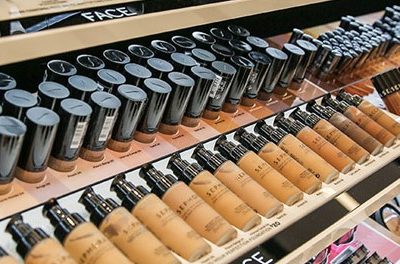Warby Parker took on the big names in eyewear with a simple goal: make glasses more accessible (and less expensive) with a direct to consumer purchase model. The mammoth $131 billion eyewear industry wasn’t easy to tap into, with large companies controlling a majority of the market.
However, with their unique model (to the eyewear industry) and clever marketing, they’re now valued at $1.75 billion, reaching the highly coveted unicorn status. So how do they do it?
Well, while we don’t have all the answers to how they make incredible marketing campaigns (like their genius April Fool’s campaign, Warby Barker), we do have insight into their email strategy through the help of MailCharts. Let’s take a look…
Diving into the Warby Parker Email Journey
We’ve been eyeing Warby Parker emails for almost 5 years now, and wow…the heart-eye emojis we have for their emails 😍. Just look at this simplistic beauty:
How Warby Parker Deftly Handles a Range of Journeys
A few notable email journeys that have stuck out to us are their cart abandoner, email subscriber, browse abandoner, and purchase journey. For a primarily online business like Warby Parker, having consistent communication through email is key.
For instance, their cart abandoner journey triggers an email send within 2 hours after a shopper abandons a cart with frames in it. This alert gives the shopper a window of time to return and purchase before the brand sends a reminder notification. Sending too soon could be annoying for a customer who was planning on purchasing within a few minutes.
Three days after sending the email with the almost-forgotten frames, they send a follow-up welcome email with additional information about the product. Throughout the cart abandonment journey, Warby Parker peppers in customer reviews, other frames available, and an inside look into how their frames are made. These added touches are great for educating new members about the product.
Through MailCharts, we’re able to see the varied email journeys for individual brands, the emails that make up the journey, and the exact intervals between emails. For Warby Parker specifically, we’ve been tracking them for a while so you’re able to dig into how their emails have evolved to improve the customer experience:

Warby Parker’s Secret Sauce: Email Scoring
The various email journeys are only one slice of the pie. Yes, it’s helpful to see the cadence of emails and the time when they’re sent, but there’s still a lot missing — like how well these emails perform.
That’s where MailCharts’ reporting features come in. Here’s where we dissect the implementation of the email: Is the subject line an optimal length? Are the image sizes optimal? What tools do they use to help implement emails? Most of these variables are factored into the MailCharts email score, which Warby Parker consistently rates as 75% or higher with our scoring algorithm.
Not only can you dissect Warby Parker’s email score within MailCharts, you can also look at the brand’s sending habits — including time sent. Based on current data, Warby Parker typically sends at 1pm ET on Tuesdays with Friday sends being a close second. This data is helpful for formulating A/B testing ideas such as time of week and time of day for email sends. It’s also a great comparison for other accessory retailers to learn from and derive their tests.
Where Warby Parker’s email score really shines is subject line length, optimized preview text, lightweight HTML, and deliverability. Companies whose emails MailCharts consistently scores low — regardless of how great their content may be — are experiencing implementation issues that likely limit how successful they could be.


Hungry for more? Sign up to view our full Warby Parker report for more insights into how they’re killing the email game. Your account also lets you access the same data and information about more than 30,000 other brands — just what you need to plan your upcoming email strategies.




